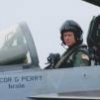How do you check Weather / NOTAMs / TFRs?
How do you check Weather / NOTAMs / TFRs?
55 members have voted
-
1. To get a pre flight weather briefing, I...
-
Go online to my favorite aviation weather provider
-
Call FSS and talk with a briefer
-
Sometimes I do both, go online and talk with an FSS briefer for the same flight
-
-
2. To get my pre flight NOTAM's, I...
-
get NOTAMs through DINS, the FAA's NOTAM website or Lockheed Martin's 1800wxbrief website
-
Call FSS and talk with a briefer
-
Don't usually check NOTAMs
-
-
3. I check TFR's with….
-
An aviation App like Garmin or ForeFlight to show TFRs
-
I use the FAA's TFR map website (http://tfr.faa.gov/tfr_map_ims/html/index.html)
-
Lockheed Martin's Flight Services website as part of my briefing
-
Call FSS and talk with a briefer
-


Recommended Posts
Join the conversation
You can post now and register later. If you have an account, sign in now to post with your account.